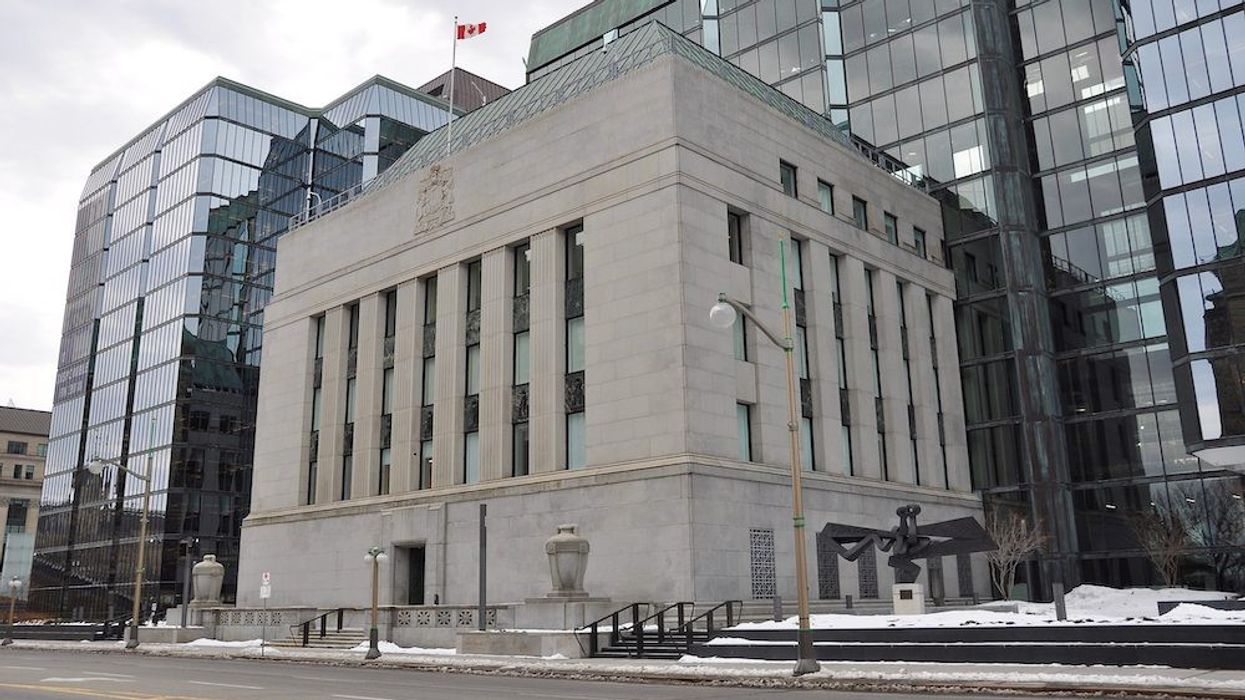Expectations have been steadily rising that larger interest rates hikes, made at a sharper pace, are to come this year -- and a new forecast calls for one of the most hawkish scenarios yet.
New analysis from Bank of America Global Research is calling for the Bank of Canada (BoC) to implement a 50-basis-point (bps) hike in each of its next three rate announcements -- this April, June, and July -- before resuming a steady clip of 0.25 bps at each announcement thereafter, bringing the policy rate to 3.25% by March 2023. That’s slightly higher than their previous call of a 3% rate in that time period, with additional Bloomberg economist data echoing the likelihood of a 3% rate by next March.
Should this forecast pan out, it would put the central bank on the most aggressive tightening cadence for monetary policy seen in over 20 years.
READ: Forget Showers, April is Bringing a 0.5% Rate Hike for Borrowers
A mix of factors has set the stage for substantially higher rates. Surging inflation, which hit a 31-year high in February both from pandemic economic recovery and energy price shocks due to the Russian invasion of Ukraine, is a main contributor. New consumer and business survey data released by the Bank of Canada today reveal both groups anticipate higher inflation will stick around for at least two years, due to supply chain restrictions and geopolitical conflict.
As well, on April 1st, Statistics Canada data showed the Canadian economy grew for the eighth consecutive month, with GDP edging up 0.2%.
US Fed is Setting the Stage for Canadian Hikes
Meanwhile, rate hike expectations are also simmering south of the border; US job numbers boomed in March, reaching pre-Covid levels with unemployment at a 53-year low. Like Canada, American inflation is well above target, hitting a 40-year high last month at 7.9%. That prompted comments from US Federal Reserve Chair Jerome Powell that “inflation is much too high”, and that the Fed would “take necessary steps to ensure a return to price stability” -- a statement that’s cemented market expectation for at least two half-point increases in the near future from the Federal Open Market Committee (FOMC).
Similar comments made by BoC Deputy Governor Sharon Kozicki have also lit a fire under market pricing. In a late March speech, she alluded to improved households’ capacity to withstand higher borrowing costs, and that the Bank is prepared to take stronger action to reign inflation in.
“The invasion of Ukraine is adding to inflationary pressures around the world and in Canada. This is primarily because it has caused global prices for oil and other commodities to surge. The result is inflation in the near term that is expected to be higher than we projected in January, when we published our latest projections,” she said. “A key concern for us is the broadening of price pressures -- around two-thirds of the components in the consumer price index are now exhibiting inflation above 3%. Persistently elevated inflation increases the risk that longer-run inflation expectations could drift upward.
“So, while we will watch developments with respect to households closely as we proceed, it’s important to be clear that returning inflation to the 2% target is our primary focus and unwavering commitment. We have taken action and will continue to do so to return inflation to target, and we are prepared to act forcefully.”
BMO Revises Its Rate Hike Call
In a note written by Robert Kavcic, Senior Economist and Director of Economics at BMO Economics, the recent developments have led the lender to make changes to their BoC and Fed calls, stating, “now we see more aggressive near-term tightening, along with a higher end point for rates.”
He says BMO is now anticipating the BoC will implement 50-bps hikes in April and June, and another 25-bps increase in July. It will then “slow the cadence” with 25-bps increases made in tandem with the Bank’s Monetary Policy Report releases, in October, January, and April 2023, bringing the policy rate to 2.25%.
Meanwhile, they expect the FOCM to raise by 50 bps at their next two announcements before shifting to 25-bps hikes for the remainder of 2022, eventually coming to a target of 2.375% by December, before resuming hikes at every other meeting through 2023, arriving at a target range between 2.75-3% by the end of that year.





















